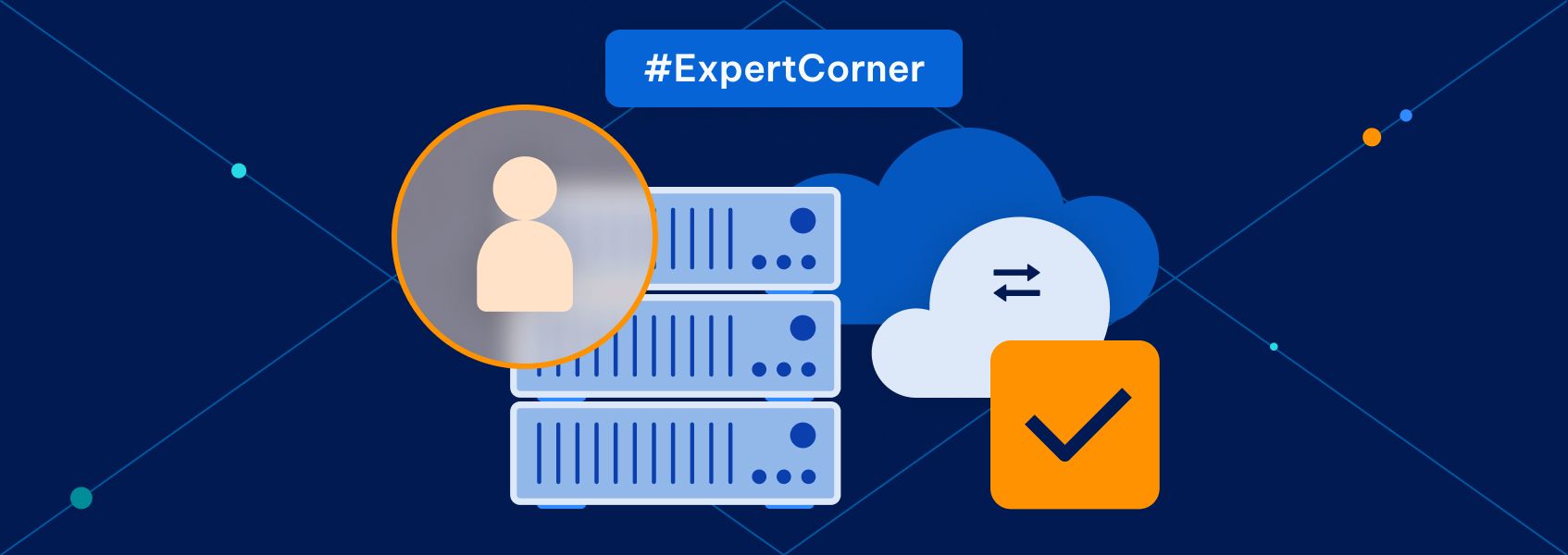Proxy Network Infrastructure 101: Enhancing Security, Speed, and Scalability
Expert corner

Stephan Miller
Proxy networks play an important role in modern network architectures, acting as intermediaries that manage and reroute data flows. The data they handle can be of various types, including search queries and potentially sensitive client information, emphasizing their role in data security.
However, the benefits of proxies extend beyond security. They give users unrestricted online data access, making activities like web scraping and data farming possible. Proxies can also alleviate server load on websites and applications, leading to enhanced network performance.
There are two main types of proxies with distinct purposes:
- Reverse proxies
Employed on the server side, reverse proxies manage incoming traffic directed towards web servers. They handle tasks like load balancing to distribute workload efficiently and prevent denial-of-service (DoS) attacks .
- Forward proxies
These proxies, like the ones offered by IPRoyal, sit between a user’s device and the internet. Forward proxies provide a new location-specific IP address based on the provider’s network. This functionality hides the user’s original IP, enhancing privacy and anonymity while enabling activities like web scraping and SEO research that might otherwise be restricted.
This article examines the intricacies of proxy network infrastructure, exploring its role as a linchpin in data security and its impact on facilitating diverse online activities.
Building a Dependable Proxy Network
Key Factors to Consider When Building a Proxy Network
When building a proxy network, whether it’s a reverse proxy for server-side benefits or a forward proxy for user-side anonymity, several factors should be considered:
- Cost
Striking a balance between affordability and robust functionality is important. Open-source solutions like HAProxy and Nginx can offer cost-effective options for reverse proxies, while forward proxy providers might have varying pricing structures based on features and bandwidth.
- Security
Reverse proxies can enhance security by adding an extra layer of protection for backend servers, mitigating DDOS attacks , and enforcing access controls. Forward proxies should prioritize encryption protocols like TLS 1.3 to safeguard user data in transit.
- Speed
Speed is a priority for both reverse and forward proxies because it ties directly to user experience. Forward proxy speed depends on factors like the provider’s network infrastructure and chosen proxy type.
- Scalability
The ability to handle increasing traffic demands is vital. The best proxy solutions scale automatically to handle increased traffic without compromising performance.
Minimizing Latency
Latency , the delay in communication between the user and the server, impacts the speed and responsiveness of a network. Minimizing latency is crucial for providing a seamless and satisfactory browsing experience for users.
One effective approach to reducing latency is strategically locating proxy servers in close geographic proximity to the majority of users. Proxy servers that are physically closer to the end users can deliver data more swiftly as the physical distance between the user and the server is reduced.
By minimizing latency, users will experience faster page load times, businesses that rely on web scraping will get their data faster, and the network infrastructure will have fewer bottlenecks.
Ensuring Reliability
The reliability of the proxy network is a critical factor in delivering a consistent, uninterrupted browsing experience for users and unrestricted web scraping. When selecting a proxy provider, it is important to review their uptime guarantees and overall service dependability.
The best proxy providers typically offer high uptime service-level agreements (SLAs) with 99.9% availability. This level of reliability ensures that the proxy network remains operational and accessible, minimizing the risk of workflow disruptions.
The consequences of choosing an unreliable proxy provider can be severe. Service interruptions or frequent outages can lead to significant business impacts, particularly for operations that rely on constant online presence or uninterrupted access to online data.
Choosing the Right Type of Forward Proxy
When selecting a forward proxy solution, it is important to understand the distinct characteristics and advantages of the two primary proxy types: residential proxies and datacenter proxies.
Residential proxies use IP addresses provided by internet service providers (ISPs) to individual households. These proxies are highly valuable for activities such as web scraping , as they appear more authentic and are less likely to be blocked by target websites.
The residential nature of these proxies provides an added layer of legitimacy and trust in the eyes of the web servers being accessed. They also often offer a wide range of IP addresses across various countries and regions, allowing access to geo-restricted content.
The disadvantages to residential proxies are that they are generally more expensive than datacenter proxies, can be slower, and their availability can fluctuate. This is because they rely on individual user internet connections.
Datacenter proxies derive their IP addresses from servers in corporate data centers. While they may not possess the same level of authenticity as residential proxies with a higher risk of being blocked, they offer several distinct advantages.
Datacenter proxies are more cost-effective to operate than residential proxies. They can also deliver faster connection speeds compared to residential proxies because they are typically more directly connected to the internet backbone .
Choosing the Right Type of Reverse Proxy
Reverse proxies are primarily deployed on the server side and play an important role in optimizing the performance, security, and scalability of web applications. The primary benefits of using a reverse proxy include:
- Load balancing
They distribute incoming traffic across multiple backend web servers, ensuring that no single server becomes overwhelmed.
- SSL/TLS termination
They can handle the encryption and decryption of web traffic, offloading this computationally intensive task from the web servers and improving efficiency.
- Security enhancement
They can shield backend servers from direct exposure to the internet and enforce access controls and other security measures.
- Content caching
They can cache frequently accessed content, reducing the load on web servers and delivering faster response times.
Unlike reverse proxies, the choice of a forward proxy is primarily based on the specific functionalities it provides, as well as the source of its IP addresses . When selecting a reverse proxy solution, you should consider scalability, security features, efficiency, and compliance.
Implementing the Proxy Server
When implementing a proxy server, whether it is a forward proxy or a reverse proxy, there are several key considerations and requirements that need to be addressed.
Forward proxies are primarily used for client-side benefits such as bypassing geo-restrictions, web scraping, e-commerce, and beyond. When implementing a forward proxy, the focus should be on:
- Ensuring ethical residential proxy sourcing , transparent business practices, and compliance with all relevant regulations.
- Configuring the forward proxy to effectively hide the client’s true identity and IP address, ensuring anonymity.
- Establishing access control policies and content filtering to regulate and monitor the traffic passing through the proxy.
Reverse proxies , on the other hand, are primarily focused on server-side benefits, such as load balancing, SSL\TLS termination, security enhancement, and content caching. When implementing a reverse proxy, key considerations include:
- Configuring the reverse proxy to distribute incoming requests across multiple backend servers effectively.
- Enabling the reverse proxy to handle encryption and decryption.
- Implementing security measures such as firewall rules and intrusion detection.
- Configuring the reverse proxy to cache frequently accessed content.
Regardless of the proxy type, the implementation process requires meticulous planning, considering factors such as network topology, security requirements, and performance targets to ensure the proxy server meets the specified needs of the operating environment.
Maintaining the Proxy Network
Maintaining a proxy network’s efficiency and reliability, whether it’s a forward proxy or a reverse proxy, requires ongoing attention and proactive measures.
For reverse proxies, the maintenance process involves:
- Regular software updates
Ensuring the reverse proxy software is regularly updated with the latest security patches and performance enhancements.
- Continuous monitoring
Proactively detecting high resource utilization, network congestion, or security threats, to address them in a timely manner.
- Maintenance scheduling
Regularly improving configuration and performance, and applying any necessary adjustments to the proxy setup.
For forward proxies, the maintenance responsibilities are often handled primarily by the service provider, with users relying on the provider to manage the necessary updates and maintain the network’s security and smooth operations. The provider should be able to address any potential issues that may arise, giving end users peace of mind.
Both types of proxies require establishing a data backup strategy to safeguard valuable information and ensure the swift restoration of services in the event of malfunctions or other mishaps. Implementing troubleshooting and debugging tools in either type of proxy to quickly identify and resolve issues is also a best practice.
Enhancing Proxy Network Performance
Optimizing Network Speed
Ensuring fast and reliable network speeds for a proxy network is important, as it directly impacts the performance of every application, website, or service accessed through the proxy.
For reverse proxies, which often employ load-balancing mechanisms, the following strategies can be utilized to enhance network speed:
- Load balancing optimization
Employ best practices to effectively distribute incoming requests across multiple backend servers.
- Traffic-aware proxy selection
Steering away from high-traffic proxy servers and favoring low-traffic ones.
- Data management and compression
Optimizing data transmission to further enhance the network’s performance.
When it comes to forward proxies, the speed optimization strategies depend on the proxy type , whether it’s a dedicated or a shared proxy:
- Private (dedicated) proxies
For speed-critical tasks, private proxies offer the best performance as the entire bandwidth is allocated to a single user.
- Shared proxies
Shared proxies distribute bandwidth among multiple users, potentially impacting individual speeds. Consider the number of concurrent users and choose a provider with sufficient bandwidth capacity for your needs.
Regardless of the proxy type, the geographical distance between the user and the proxy server location can directly affect network speed, as it influences the signal transmission time. Utilizing proxy servers that are in close proximity to the user can result in better network speeds.
Enhancing Security Measures
Maintaining robust security is a critical part of operating a reliable and trustworthy proxy network. To ensure the privacy and integrity of the proxy network, it is essential to implement strong encryption protocols.
Utilizing Secure Socket Layers/ Transport Layer Security (SSL/TLS) encryption ensures the communication between the user and the proxy server, protecting sensitive data from eavesdropping. For forward proxies, encrypting user data, in addition to hiding the user’s IP address, provides an extra layer of privacy protection. The HTTPS internet protocol uses SSL/TLS and all proxies should utilize this protocol for optimal security.
Users of forward proxies, whether they are using dedicated or shared proxies, don’t need to worry about the intricacies of the authentication process, because the provider manages it for them. This hands-off authentication approach allows users to access the proxy network conveniently, efficiently, and securely.
In reverse proxy scenarios, users initiate requests, and the reverse proxy forwards those requests to the web server. If authentication is needed, it is handled by the web server, not the proxy. The absence of user authentication in reverse proxies streamlines the user experience, allowing for a straightforward interaction between the user and the desired web content.
Adapting to Scalability Needs
As businesses grow and evolve, their requirements and workloads often increase, making scalability an important consideration for proxy network infrastructure. Ensuring that the proxy network can seamlessly scale to meet the changing needs of the business is essential to maintain continuity and optimal performance.
When it comes to forward proxies, it is important to evaluate whether the provider offers scalable solutions that can accommodate increased traffic, data volumes, or user demands without compromising performance. An effective technical support team and a responsive customer service department are also vital in managing scalability challenges and ensuring smooth operation as the business grows.
Businesses that implement reverse proxies should closely monitor their web traffic patterns and engage in proactive capacity planning to ensure that the proxy infrastructure can scale appropriately to accommodate future growth. As the number of website visitors increases, the ability to add more proxy servers dynamically and implement effective load-balancing mechanisms is essential.
Importance of Reliable Proxy Networks
Benefits of Having a Reliable Proxy
Reliable proxy servers, whether forward or reverse, offer a multitude of advantages for businesses and individual users.
Reliable reverse proxies offer:
- Enhanced security
They act as a security barrier between the internet and backend servers.
- Improved performance
Reverse proxies efficiently distribute incoming traffic across multiple backend servers and can store frequently accessed content locally for faster loading times.
- Operational efficiency
They simplify website infrastructure management through a single point of control for security, access control, and content caching.
Reliable forward proxies bring:
- Enhanced privacy and anonymity
Forward proxies mask a user’s IP address, making it appear as if they are connecting from a different location.
- Improved browsing speeds
They can employ data management and compression techniques to streamline data transmission.
- Task automation
Forward proxies can help automate tasks like web scraping by mitigating IP blocking .
- Content management
Businesses can leverage forward proxies to manage employee access to specific websites or content types.
- Geographical access
A reliable forward proxy pool with diverse IP addresses allows users to bypass geo-restrictions and conduct international market research without limitations.
Review and Key Takeaways
Reverse proxies are primarily focused on server-side benefits. They play a crucial role in managing web server traffic, enhancing load balancing, and offering protection against DDOS attacks. The deployment of reverse proxies is vital for optimizing network performance, ensuring a seamless user experience by improving security and efficiency for backend systems.
Forward proxies, such as those provided by IPRoyal , serve as intermediaries between the user’s device and the broader internet. They assign new, location-specific IP addresses, which can be beneficial for a variety of tasks, including web scraping, SEO research, and bolstering online privacy. Users can choose between residential, datacenter, ISP, and mobile proxies based on their requirements for authenticity, speed, and cost-effectiveness.
The decision to implement a forward or a reverse proxy depends upon your specific needs. Each type presents distinct advantages for data security and online accessibility. Understanding these nuances allows users to make well-informed decisions and optimize their network infrastructure to best meet their online goals and requirements.


